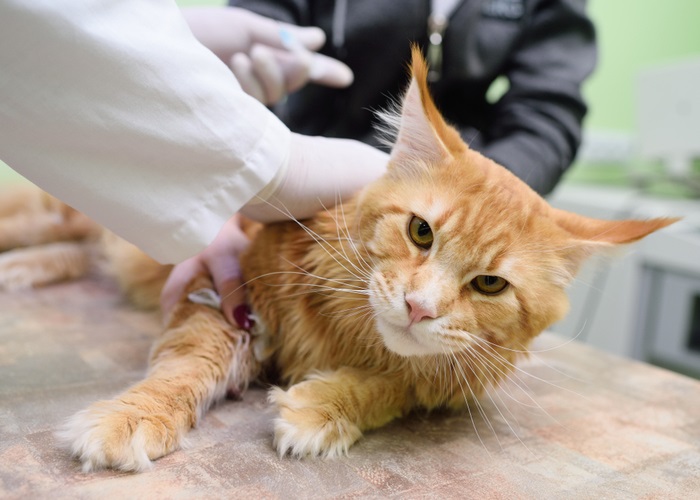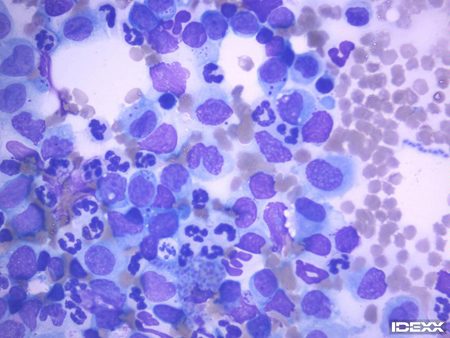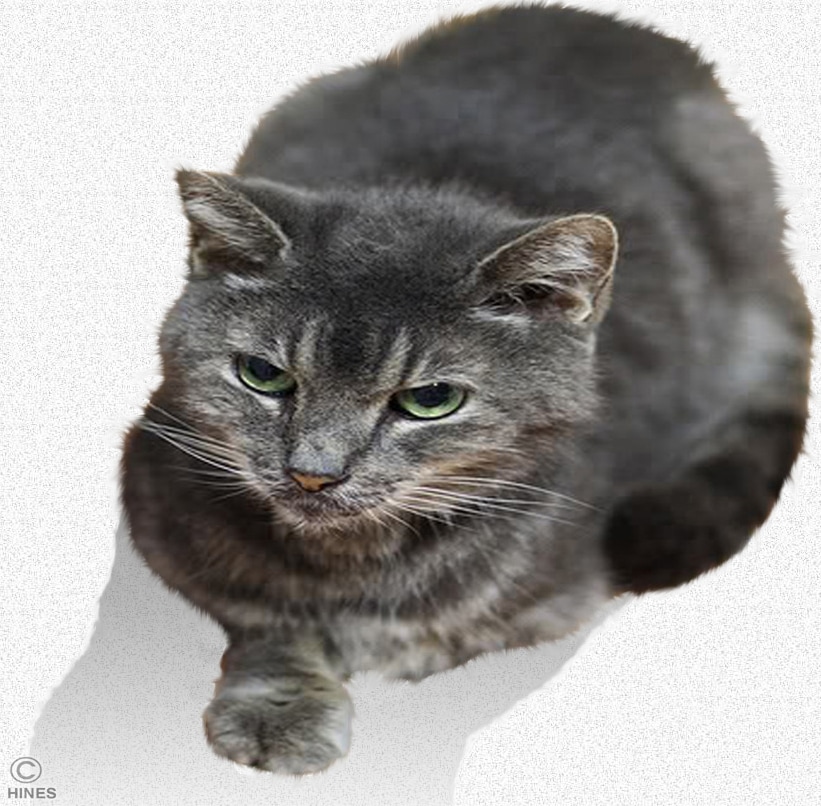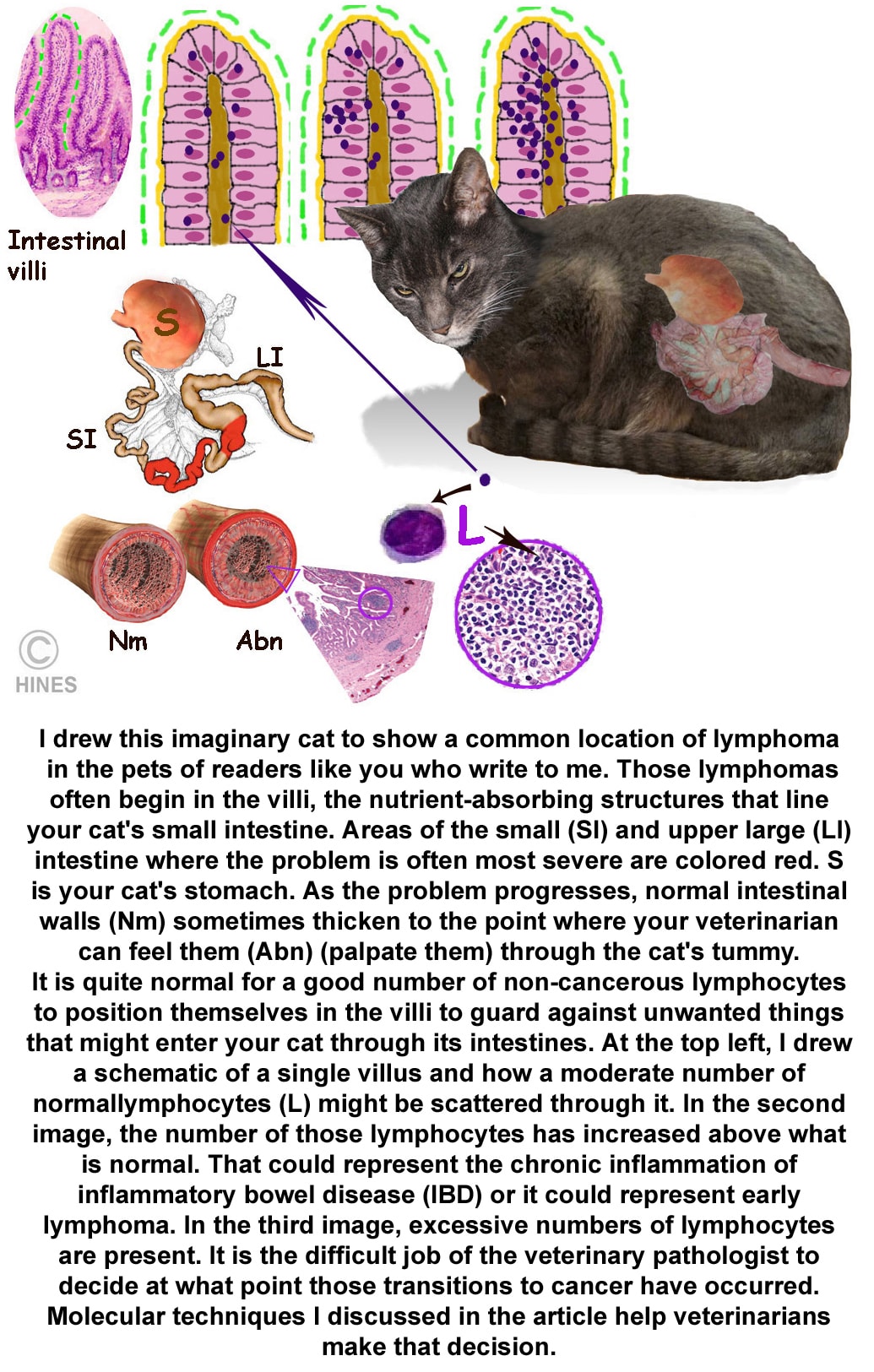alimentary lymphoma in cats
Helping a cat cope with alimentary lymphoma is quite overwhelming and there are lots of decisions to make diet chemo supplements and how to best keep the cats quality of life good. Single-agent lomustine can be used in cats that do not tolerate frequent injections or whose owners wish to keep costs down.

How To Diagnose Feline Intestinal Lymphoma 9 Steps
There are three subtypes based on mitotic rate and cell type determined by examination of biopsy samples.

. 47 Often the treatment and outcome of GI lymphoma are included with other forms of. It can become fatal if the tumor is situated near the small or large intestine since it can restrict the passage of bowel and pose health hazards. Alimentary form occurring in the gastrointestinal tract liver abdomen and surrounding lymph nodes.
Alimentary Lymphoma in Cats Also known as gastrointestinal lymphoma the alimentary form affects the gastrointestinal tract in cats. Alimentary lymphomas include a gastrointestinal GI form a mesentery lymph node form and a hepatic form. Diagnosis is made on biopsy either by fine needle aspirate core biopsy or surgical biopsy.
Ad We Offer the Same Medications As Your Vet at Great Prices. The most common anatomical form of lymphoma in cats is alimentary lymphoma AL. Feline alimentary gastrointestinal lymphoma is the most common cancer diagnosed in domestic cats.
Unlike intermediate- and high-grade alimentary lymphoma IHGAL and large granular lymphocyte lymphoma LGLL which can often be. An emerging entity and a potential animal model for human disease Background. Lymphoma in cats is the most common cancer in felines.
In alimentary lymphoma the clinical signs are those of vomiting diarrhea. Types of Feline Lymphoma. Feline lymphoma presents in a multitude of anatomical forms with gastrointestinal GI lymphoma being the most frequent form of presentation.
Accurate diagnosis is important to guide appropriate treatment. Lymphoma is a clonal expansion of neoplastic lymphocytes in solid organs and is the most common feline. Electronic searches of PubMed and Science Direct were carried out.
Symptoms of this form of feline lymphoma include. Alimentary lymphoma or what is commonly known as Gastrointestinal lymphoma is one of the most common kinds of lymphoma that I have seen in cats. Alimentary affects the digestive system and lymph nodes around that area.
Unlike intermediate- and high-grade alimentary lymphoma IHGAL and large granular lymphocyte lymphoma LGLL which can often be. This disease can therefore vary from something which cats can live with for some time without illness to a rapidly progressive and fatal condition. Symptoms Gastrointestinal lymphoma accounts for approximately 5 of cases and is less easily diagnosed than the more common multicentric form.
Practical relevance Accurate diagnosis of the distinct subtypes of alimentary lymphoma AL that occur in cats is important as there are major differences between them in clinical presentation treatment and prognosis. Currently the most frequently diagnosed form of feline lymphoma is the alimentary or intestinal form. 13 Although the GI form of the disease is most frequently encountered few reports exist that focus solely on treatment of the GI form.
The most common subtype is known as enteropathy-associated T cell lymphoma EATL type II or small cell lymphoma and accounts for 10-20 of all tumors with approximately 200 cases per 100000 cats reported each year. Low grade LG-AL intermediate. Practical relevance Alimentary lymphoma AL occurs commonly in cats and exists as distinct subtypes that differ in their clinical course response to treatment and prognosis.
Patients often present with a history of reduced appetite intermittent vomiting and sometimes a palpable mass in the abdomen. Symptoms of Feline Intestinal Lymphoma Alimentary Feline intestinal lymphoma is often referred to as an alimentary form of this cancer. Both the liver and the stomach as well as the intestines make up the gastrointestinal tract.
Unfortunately says Margaret McEntee DVM professor of oncology at Cornell Universitys College of Veterinary Medicine it is the most frequently. Accurate diagnosis of the distinct subtypes of alimentary lymphoma AL that occur in cats is important as there are major differences between them in clinical presentation treatment and prognosis. The most common form of feline lymphoma this disease usually occurs in cats between the ages of 9-13 years of age and is the least likely to be linked to feline leukemia.
The recommended treatment for HGAL is a multiagent chemotherapy protocol. As such alimentary lymphoma is also known as feline intestinal lymphoma. The median or average age of the cats with alimentary lymphomas is around 10 years old and they are mostly FeLV negative.
Alimentary lymphomas include a gastrointestinal GI form a mesentery lymph node form and a hepatic form. Author Tracy Gieger 1 Affiliation 1. Alimentary lymphoma in cats and dogs Vet Clin North Am Small Anim Pract.
Chewy Pharmacy is that Simple. The disease is most often found in the intestines as vaccination against the feline leukemia. Clinical challenges Differentiation of low-grade alimentary lymphoma from lymphoplasmacytic enteritis can be challenging.
Add your Vet and Pet Rx info then Chewy Handles the Rest. It is characterized by an infiltration of the gastrointestinal tract andor associated lymph nodes with neoplastic cancerous lymphocytes. There are a few papers reporting association of feline immunodeficiency virus FIV infection and feline lymphomas.
This is a spectrum of diseases including low grade lymphoma high grade lymphoma and large granular lymphocyte lymphoma LGL. Ad Help your pet cope with symptoms like loss of appetite nausea and swollen lymph nodes. Get NHVs Lymphoma Gold Support Pack Today.
Feline low-grade alimentary lymphoma. Feline gastrointestinal lymphoma. Experts believe there is no link between this form and feline leukemia.
The incidence of this disease has increased significantly over the past 15 years during the post-feline leukemia era. Alimentary lymphoma is one of the most commonly diagnosed neoplasms of the cat. If a cat is leukemia free there is a chance the cat will recover after undergoing.
Feline lymphoma is a malignant cancer of the lymphatic system the exquisitely structured arrangement of internal organs and tissues that directly or indirectly influences virtually every aspect of a cats physical existence. The median or average age of the cats with alimentary lymphomas is around 10 years old and they are mostly FeLV negative. There are a few papers reporting association of feline immunodeficiency virus FIV infection and feline lymphomas.
8 Approximately 50 to 65 of cats will respond with 30 having a complete response. DESCRIPTION provided by applicant.

How To Diagnose Feline Intestinal Lymphoma 9 Steps

Causes And Risks Of Cat Lymphoma And Leukemia Vlog 97 Youtube

Extranodal Lymphoma In The Cat Semantic Scholar

Feline Cutaneous Lymphoma Figure 1 Diffuse Anaplastic Large B Cell Download Scientific Diagram

Lymphoma In Cats Symptoms Diagnosis Treatment All About Cats

Alimentary Lymphoma In A Cat Semantic Scholar

Feline Lymphoma What Your Need To Know The Animal Medical Center

Lymphoma In Your Cat Ron Hines Vetspace 2nd Chance The Animal Health Website

Lymphoma In Cats Treatment On Sale 54 Off Www Visitmontanejos Com

Feline Lymphoma Clinician S Brief

Extranodal Lymphoma In The Cat Semantic Scholar

Lymphoma In Cats Veterinary Partner Vin

Lymphoma In Dogs Cats What S The Latest Today S Veterinary Practice

Lymphoma In The Cat Fact Sheet Davies Veterinary Specialists
Tigger And Is It Ibd Or Lymphoma Wild Rose Cat Clinic Of Calgary

3 Ways To Treat Feline Intestinal Lymphoma Wikihow

Feline Lymphoma Clinician S Brief

Lymphoma In Your Cat Ron Hines Vetspace 2nd Chance The Animal Health Website